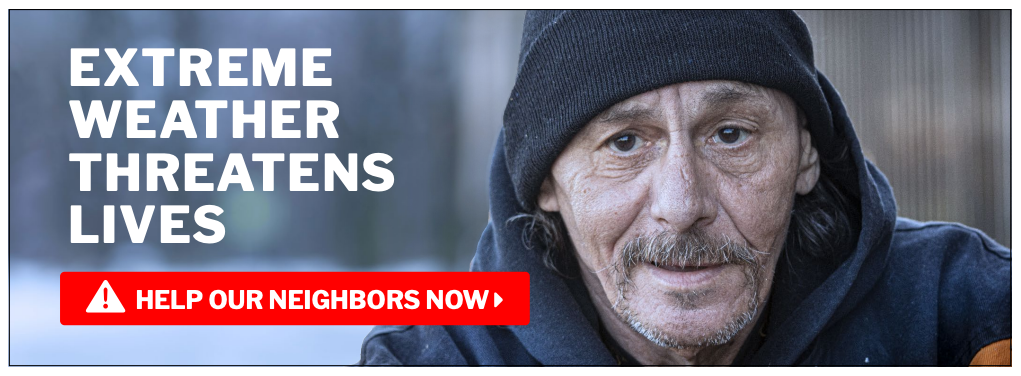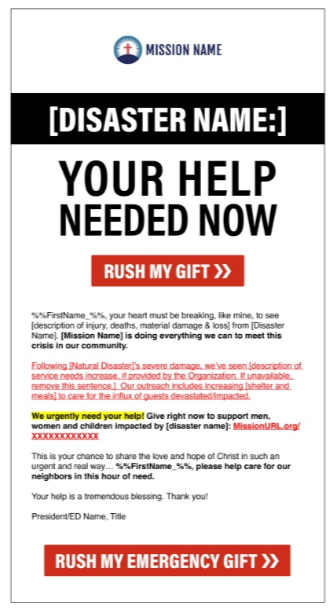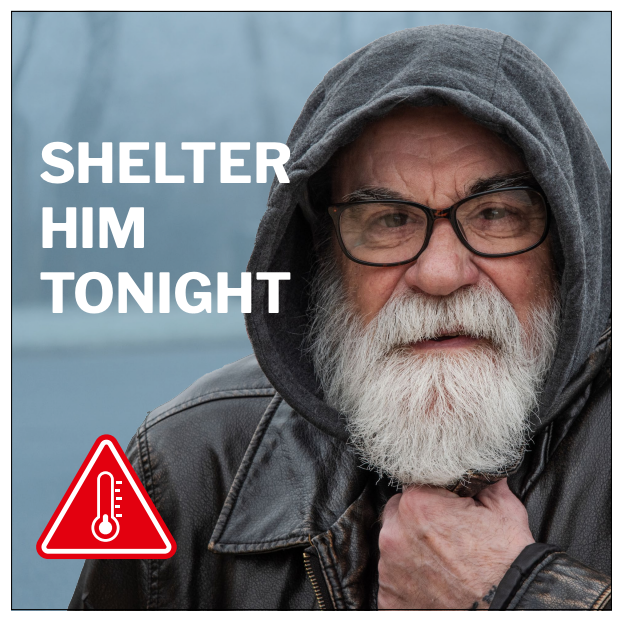Why Speed and Strategy Matter for Rescue Missions
Hurricane Helene. Wildfires in LA. Record-breaking winter storms.
Disasters like these bring urgent needs… and they leave donors wondering how they can help. Rescue Missions may feel it’s outside their scope to fundraise during crises like these. But the reality is donors are ready to respond, if you act quickly!
We asked three of BDI’s seasoned fundraisers for their best advice to raise support during a disaster (especially when you’re not a traditional crisis-relief organization like the Red Cross). Some common themes emerged from their feedback: localization, speed and digital-first strategy.
Read on to learn how you can maximize support when it’s needed most in your community.
Why Rescue Missions Should Fundraise During a Disaster
Micah Mann, BDI Senior Account Director/Strategist, recently led the development and deployment of digital crisis appeals for four of BDI’s Rescue Mission partners experiencing extreme cold weather in their communities.

“In times of weather-related crisis, donors are reminded of the importance of our Rescue Mission partners’ work,” Micah says. “Weather relief has become as fundamental as a meal offer.”
“It is clear to donors: If it is dangerous to even step foot outside, what must it be like to be living on the street in this weather?”
– Micah Mann, BDI Senior Account Director/Strategist

Here are several reasons why Micah recommends Rescue Missions should lean into fundraising during a disaster situation:
- Donors respond emotionally to disasters. When disasters like extreme weather make headlines, donors naturally empathize. They may even be experiencing the disaster too, though to a lesser degree than the homeless neighbors their local Rescue Mission serves.
- Rescue Missions are already doing the work. Even if a Mission doesn’t consider itself a “disaster relief” organization, its core services – shelter and food – make it a “first responder.” Missions shouldn’t shy away from asking supporters for precisely what’s needed in times of crisis.
- Disasters serve as an urgent reminder to act. Each hurricane, blizzard or wildfire report in the news reinforces the urgency, keeping donor attention high. This heightened emotional engagement often leads to increased giving.
By framing a disaster appeal around existing emergency relief work, organizations can position themselves as the frontline response for those in need – because they already are.
How Rescue Missions Can Move Quickly in a Crisis
Prior to serving as BDI’s Vice President, Client Strategy, Brian Tucker ran emergency fundraising at World Vision for a number of years. He learned that, in disaster fundraising, timing is everything.
The first organizations to launch appeals often capture the majority of donor dollars. That means waiting – even for a day or two – can result in lost opportunities to secure support.

“Have a fundraising plan in place before a disaster. Speed is strategy. Getting the word out first is key.”
– Brian Tucker, BDI Vice President, Client Strategy
If you’re new to fundraising during a disaster, or are looking to put a plan in place for your Rescue Mission, here are a few steps Brian recommends:
- Have templated creative assets ready to go. When disaster strikes, the last thing you want to do is build an appeal from scratch. Needs are urgent, and there are often many calls to action vying for donor support.
- BDI develops “on-the-shelf” creative templates that can be quickly updated with relevant details (e.g., local temperatures, disaster details, etc.) and deployed within 24 hours or less. Text-based emails are more efficient to create and increase the sense of urgency.

- Establish a RACI (Responsible, Accountable, Consulted, Informed) matrix. Decide in advance who will give final approvals. This will keep your decision-making process streamlined and efficient. Don’t let perfection get in the way of getting the word out as quickly and effectively as possible.
- Leverage existing donor lists creatively. Rather than pulling a new email list, consider repurposing a recent appeal list to expedite deployment.
- Flag responders differently. Remember that new donors acquired during a crisis are probably not “committed” to your cause until they give to a non-emergency offer. Instead of treating them like a traditional new donor, be intentional about which future appeals you send them.
In the rush of a crisis, don’t forget to follow up with a thank you to donors who make an emergency gift. Especially for any new donors, recognizing their support during a crisis is an important first step to cultivating a relationship with them. By showing appreciation soon after their emergency gift, you can encourage their continued support, long after the current disaster disappears from the news cycle.
Digital-First Fundraising Is Key During Disasters
You know you need to move quickly during a disaster… and digital strategies are the fastest and most effective way to drive disaster relief donations.
At BDI, Director of Digital Media Tara Singh employs both weather-triggered advertising and location targeting to reach the right audience at the right moment with a relevant message.

“Due to the emotional response from a disaster, BDI’s client partners often experience a surge in giving – both in the number of donations and average gift.”
– Tara Singh, BDI Director of Digital Media
When developing an online fundraising plan, Tara recommends organizations consider these tactics:
- Weather-triggered ads. Set up emergency alerts and weather warnings so you’ll be aware of any timely opportunities to rally donor support. By leveraging real-time weather data (e.g., temperature drops, storm warnings), you can serve targeted digital ads with precise messaging to a local audience.
- Urgent, action-oriented messaging. Keep messaging simple and focused on immediate needs. Calls-to-action like “Donate Now” are easy to understand and prompt giving, especially when a donor is already engaged emotionally and their attention is focused on the disaster.

- Expanded geographic targeting. For large-scale disasters, broadening digital ad reach beyond local donors can attract national support. This is something to consider when a storm, hurricane, wildfire or other disaster impacts multiple communities.
Unlike traditional media, digital fundraising allows Missions to pivot quickly, adjust messaging in real time and maximize donor engagement during a crisis.
In Summary: Be Prepared, Be Proactive, Be First
You may not be the Red Cross, but your organization is a first-responder when disasters strike locally. As you provide food, shelter and other forms of emergency care to people in need, make sure your community knows about it and are invited to get involved!
When disasters happen and heartbreaking stories and photos fill the news, people want to help… but they often don’t know how. By acting quickly and asking openly for help, you can rally donors to make a difference during a disaster – and positively impact your community long-term.
Stay updated on what’s next for nonprofit fundraising!
Sign up for our newsletter today to get the fuel that will help boost your fundraising for nonprofits to the next level.



